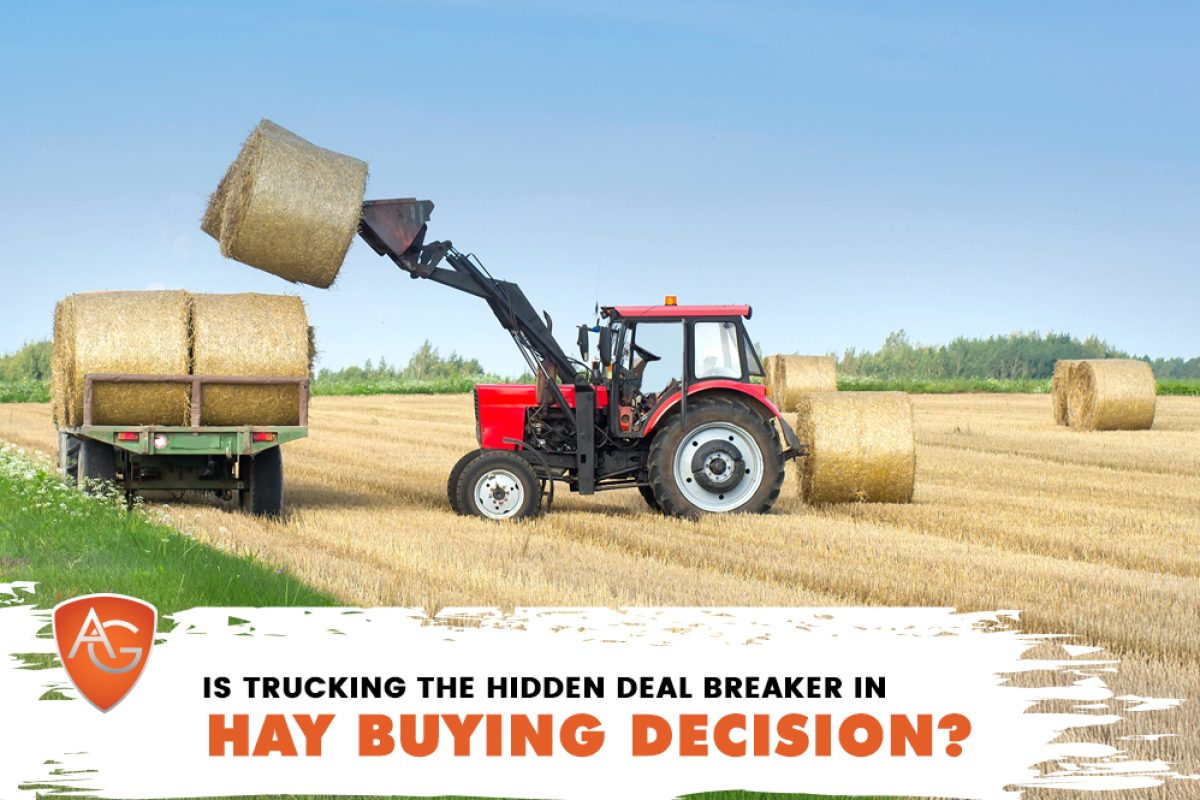Overview: Trucking costs and logistics can make or break your hay buying decision. Learn how Wyoming and Northern Colorado ranchers can avoid hidden delivery pitfalls and get the most value per bale. Read on!
Most folks know what to look for in a bale — clean, green, no mold. But a lot fewer consider how that bale gets to their place until the deal is already made. Trucking is one of the most overlooked parts of buying hay, and for plenty of ranchers across Laramie County, Wyoming and Northern Colorado, it can quietly become the most expensive part of the whole process.
Let’s break it down plain and simple.
The Miles Add Up Fast
You might find a good price per ton on alfalfa or timothy — but once you tack on the mileage to haul it, you’re looking at a completely different cost.
For example:
-
Buying hay at $230/ton from a seller 90 miles away
-
Trucking cost is $4.00–$5.00 per loaded mile
-
That’s an extra $360–$450 just to get it to you
When you divide that delivery cost across each ton, you may end up paying $40–$50 more per ton — and that’s before fuel prices tick up again.
This hits especially hard for smaller operations in places like Pine Bluffs or Livermore that only need a few loads. Even one miscalculated trip can knock a dent in your winter feed budget.
>> Related Reading: 5 Compelling Reasons to Choose Local Hay for Your Livestock
Timing Matters — Especially Around Weather
In this part of the country, weather doesn’t play around. Spring storms, early snows, and unexpected wind delays are just part of life. But when you’re depending on an outside truck to bring hay in — especially from another region — those delays can set you back hard.
Missed deliveries can mean:
-
Feeding from emergency rations
-
Dealing with wet hay left uncovered
-
Rescheduling unload crews or equipment rental
For ranchers who are already stretched thin, late hay is more than an inconvenience — it’s a risk.
Not All Loads Fit All Places
It’s one thing to get the hay to your property. It’s another thing to get it off the truck and stacked without a mess.
If the delivery rig is too big for your yard, or the driver doesn’t know how to back into tight spots, you’re stuck unloading bales in the mud or scrambling to borrow equipment.
Folks around Albin or Wellington know this well — not every ranch road is built for semis. And not every delivery truck comes with someone who understands how to unload safely on uneven ground.
Here’s a quick guide on >> Hay Bale Types And How Many Fit On a Trailer that might interest you!
Who’s Hauling It Makes a Difference
Some buyers hire out long-haul delivery or use third-party drivers. Others handle it themselves with farm trucks. Either way, things can go sideways if:
-
The hay wasn’t stacked right and shifts during transit
-
The driver shows up without the tools to unload
-
No one tells you when the load is actually arriving
None of this is fancy. But if you’ve ever had to unload wet bales in a windstorm because someone didn’t tarp right, you know exactly how frustrating it is.
Closer Isn’t Always Perfect, But It’s Often Smarter
There’s a temptation to chase hay across county or even state lines because the up-front price is lower. But once you factor in hauling, time lost, and the chance of damage or delay — local hay starts looking like the more dependable option.
Ranchers from Fort Collins to Cheyenne are starting to realize that saving a few bucks on the front end doesn’t help if the hay arrives late, beat-up, or costs a fortune to get to the gate.
Final Word: Know Before You Commit
Trucking may not be the first thing on your mind when buying hay — but it should be one of the first questions you ask. Where’s it coming from? How is it getting here? Can I unload it safely? What happens if the weather turns?
No one likes surprises, especially when livestock depend on you getting it right the first time.
Whether you’re hauling it yourself or working with someone who’s hauling for you, take the time to factor in delivery before you shake hands on a deal.
